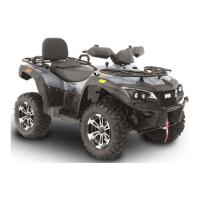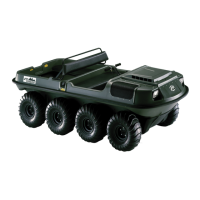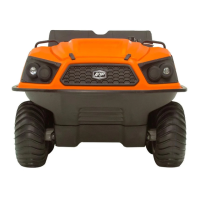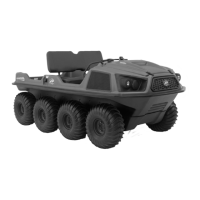49
Swerving
Swerving is an emergency maneuver required to avoid an obstacle, but is similar to
a quick turn. Swerving diers as a quick turn involves slight acceleration during the
turn. Do not accelerate if you swerve to maintain better control of your ATV. If you
are in a situation where you feel you must swerve, use this riding method:
1. Ease o the throttle as you approach the obstacle.
2. Turn the handlebar, and at the same time, shift your weight and balance as you
swerve. Using the principles of leaning, weight shifting, and balancing, shift
your body weight to the inside of the turn.
3. Avoid using the brakes until the obstacle avoidance swerve is complete and
you have regained full control of your ATV.
Crossing obstacles is dangerous, and even experienced ATV riders should avoid
this practice if possible. Riding over logs, rocks, and ruts means you must combine
all the active riding skills into one big motion. Your ATV will respond dierently
for dierent obstacles (logs, rocks, etc.), but these are general guidelines for
overcoming two-track (both tires contacting the obstacle at the same time) obstacles.
1. Keep the ATVs speed very low - less than 5 MPH.
2. Approach the obstacle head-on.
3. Lift up slightly o the seat.
4. Keep your weight on the footrests.
5. Apply a slight amount of throttle when the front tires make contact with the
obstacle.
6. Lean forward and release the throttle when the front tires clear the obstacle.
7. Keep your body loose to absorb any shock from going over the obstacle.
8. If the ATV begins to tip, shift your weight to maintain balance.
Riding Over Rough Terrain
WARNING
Riding improperly over obstacles could cause loss of control or a collision. Before
operating in a new area, check for obstacles. Never attempt to ride over large
obstacles, such as large rocks or fallen trees. When you go over obstacles, always
follow proper procedures as described in the Operator’s Manual.
Getting To Know Your ATV
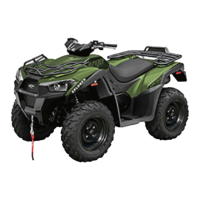
